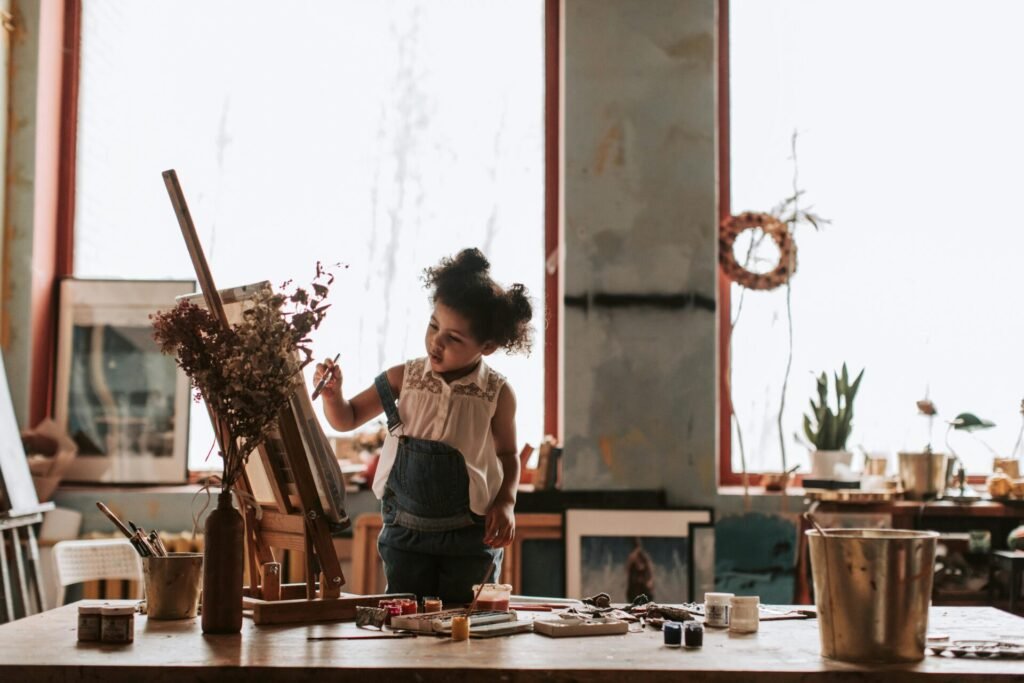The rise of child artists in the digital age has opened up exciting opportunities for creative expression, visibility, and even income. But with these opportunities come complex ethical questions. How do we protect young creators while empowering their growth? What boundaries should be in place when it comes to selling their work, managing their online presence, and safeguarding their intellectual property?
This post explores the key ethical considerations for child artists, offering guidance for parents, educators, and community leaders who want to support young talent responsibly.
Understanding the Unique Position of Child Artists
Children who create art—whether visual, musical, written, or digital—occupy a unique space. Their work may be emotionally rich, technically impressive, and even commercially viable. But they are still developing cognitively, emotionally, and socially. Ethical decisions must balance their rights as creators with their need for protection.
Key considerations include:
- Autonomy vs. Guidance: Children should have agency in their creative choices, but adults must help them navigate complex decisions.
- Consent and Understanding: A child’s ability to consent to contracts, sales, or public exposure is limited. Adults must ensure informed participation.
- Long-Term Impact: Decisions made today—especially online—can affect a child’s future identity, privacy, and career.
Selling Artwork Created by Children
Selling a child’s artwork can be affirming and financially beneficial, but it must be approached with care.
Value and Exploitation
Children’s art should never be commodified in ways that exploit their age or emotional vulnerability. Pricing should reflect the work’s merit, not novelty.
Parental Oversight
Parents or guardians should manage transactions transparently, ensuring that any income is handled ethically—ideally in a trust or savings account for the child’s future.
Informed Participation
Children should be involved in decisions about selling their work. Even if they don’t grasp every detail, they should understand the basic idea of what’s happening and why.
Social Media and Online Exposure
Social media can amplify a child’s reach, but it also introduces risks related to privacy, safety, and identity.
Privacy and Safety
Avoid sharing personal details such as full names, locations, or school information. Use pseudonyms or artist handles when possible.
Consent and Control
Children should have a say in what is posted about them. As they grow, they may want to curate or remove past content—adults should respect this.
Platform Policies
Some platforms have age restrictions and data collection practices that may not be suitable for minors. Always review terms of service before creating accounts or posting content.
Intellectual Property and Creative Rights
Children have legal rights to their creations, but enforcing and understanding those rights can be challenging.
Copyright Ownership
In most jurisdictions, children own the copyright to their original work. However, they may not be able to legally enforce it without adult representation.
Licensing and Collaboration
If a child’s work is used in a collaboration or commercial project, clear agreements should be in place. These should be age-appropriate and reviewed by legal guardians.
Education and Empowerment
Teaching children about their creative rights—what they own, how to protect it, and how to share it—is one of the most empowering steps adults can take.
Ethical Guidelines for Adults Supporting Child Artists
Whether you’re a parent, teacher, mentor, or curator, here are some best practices:
- Prioritize the Child’s Voice: Let them lead creatively, and listen to their preferences.
- Avoid Pressure: Don’t push children to produce or perform for profit or recognition.
- Model Transparency: Be open about decisions, finances, and risks.
- Respect Boundaries: If a child wants to keep their work private, honor that.
- Encourage Learning: Help them understand contracts, copyright, and online etiquette in age-appropriate ways.

Sketchbooks.org | NEW TECHNIQUES
Creative Sketch Filling Techniques for Object Outlines | Patterns & Methods
Introduction to Outline-Pattern Style of Sketching Filling the Frame with Texture and Intention A Creative Approach to Depth, Detail, and Design Sketching is a foundational part of any artist’s workflow—an open space for exploration, iteration,...
Frequently Asked Questions
Can children legally sell their artwork?
Yes, but transactions should be managed by a parent or guardian to ensure ethical and legal compliance.
Who owns the copyright to a child’s artwork?
The child does, as the original creator, even if they are a minor.
Is it safe to post a child’s art on social media?
It can be, if privacy is protected and the child consents to the exposure.
Should children have their own social media accounts for art?
Only if they meet platform age requirements and have adult supervision.
How can I protect my child’s creative rights?
Register copyrights when appropriate, and educate them about ownership and licensing.
What if my child wants to stop selling or sharing their art?
Respect their decision and help them navigate the process of removing or retracting content.
Can a child sign an art-related contract?
Not legally binding without a parent or guardian’s co-signature.
How do I price a child’s artwork ethically?
Base it on quality and effort, not novelty or age. Avoid exploitative pricing.
What are the risks of online exposure for child artists?
Privacy breaches, unwanted attention, and long-term digital footprints.
How can I support my child’s artistic growth ethically?
Provide resources, encouragement, and protection—without pressure or exploitation.
Final Thoughts
Supporting child artists is a delicate balance of encouragement, protection, and ethical responsibility. Their creativity deserves recognition, but not at the cost of their autonomy, safety, or future well-being. By approaching sales, social media, and intellectual property with care, adults can help young creators thrive in ways that honor both their talent and their humanity.
If you’re nurturing a child artist, remember: the goal isn’t just to showcase their work—it’s to help them grow into empowered, informed creators who understand their rights and feel safe expressing themselves.
Ready to Share Your Work?










